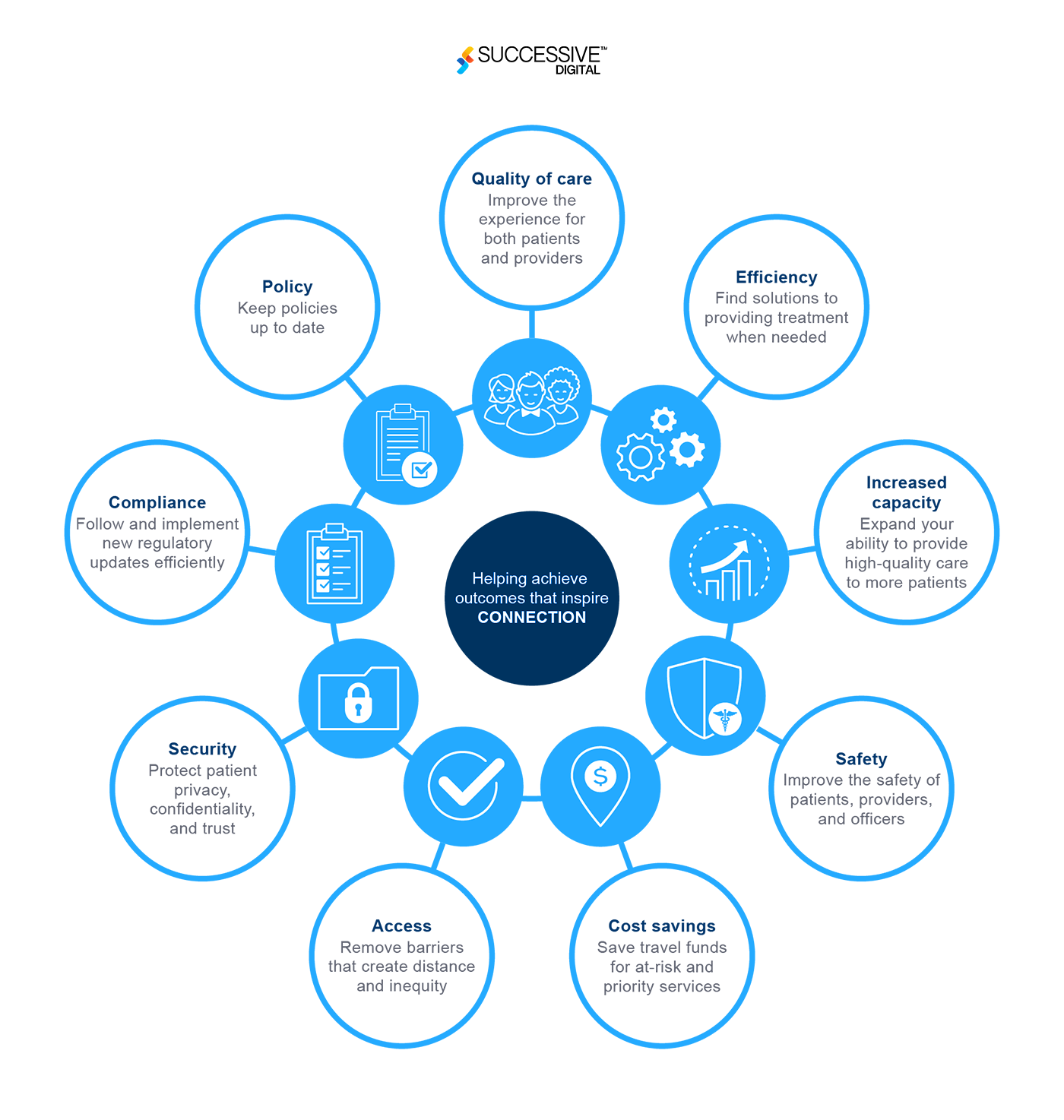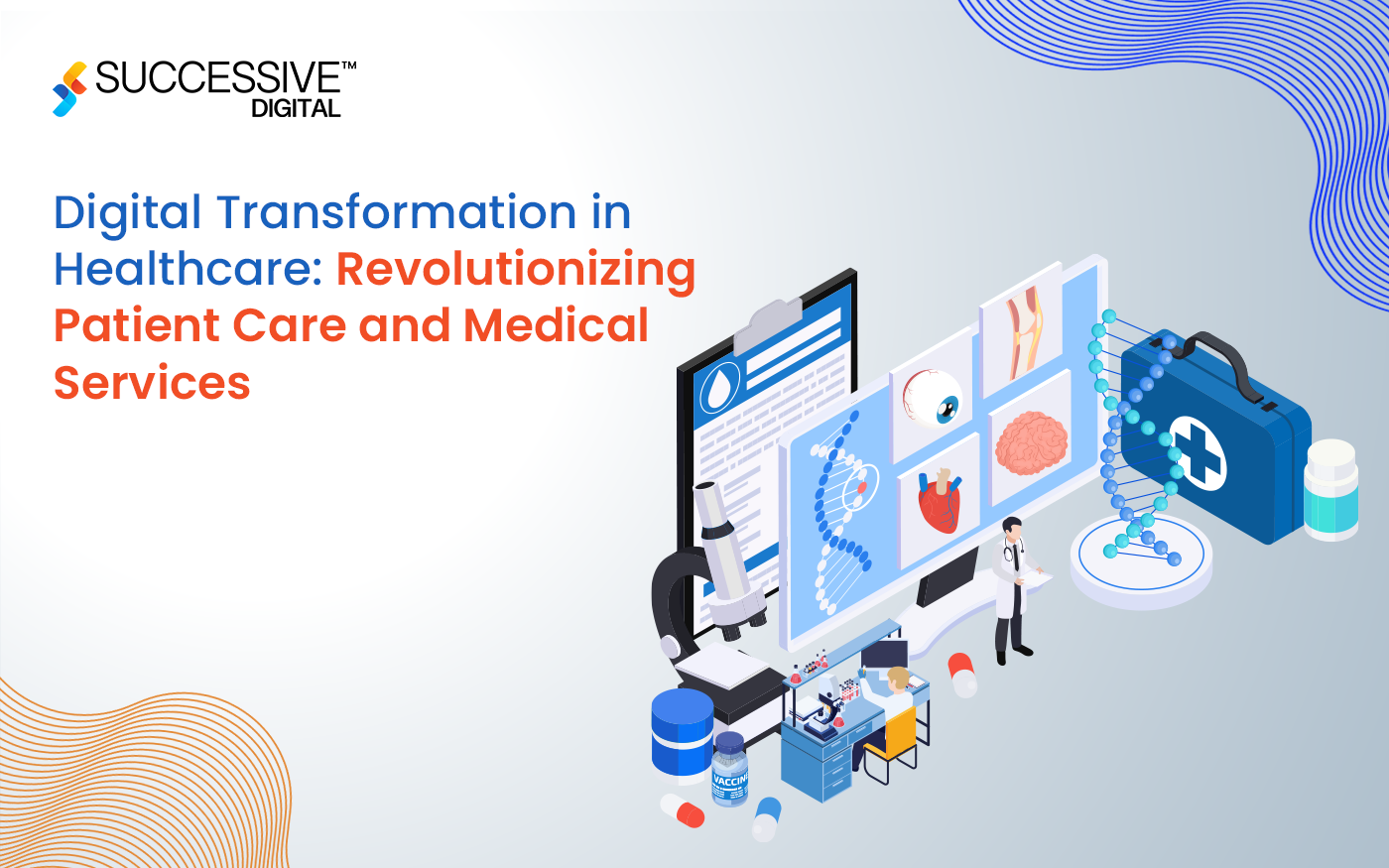Healthcare is growing exponentially, driven by the relentless integration of automated innovation. In an increasingly international and digitally transformed picture, traditional barriers to healthcare are penetrating and redefining communication, ushering in a new generation of personalized care. Central to this evolution is telehealth, a modern approach that generates digital users and remote healthcare professionals.
The impact of seeming changes on the healthcare industry cannot be overstated. From the adoption of digital health records (EHRs) and wearable devices to the deployment of telemedicine systems and remote assessment solutions, advanced technological responsiveness is revolutionizing every aspect of healthcare delivery in which patients now have more healthcare products and services at their fingertips -Access the array, allowing them to take a more active stance in coping with their health problems.
By allowing healthcare providers to discuss with patients remotely, telehealth removes geographic barriers, reducing waiting times, especially for the underserved or those in remote areas, and improving access to care. The technology allows sufferers to seek appropriate medical recommendations, access ongoing counsellors for critical conditions, and get professional care without the need for an appointment. This blog explores the fate of healthcare in the digitally transformed global space with a focus on the impact of telehealth, its benefits, global market trends, and outlook.
The Impact of Digital Transformation on Healthcare: Telehealth Perspective
The panorama of global healthcare has gone through a massive transformation due to digital innovation, growth in mobility, accessibility of medical offerings, and experience of that growth among patients. Now integrated with digital technologies, which have transformed all aspects of the healthcare sector including the use of telecommunications technology to overcome geographic limitations and intelligent mobile applications, technology is redefining present-day healthcare.
At the forefront of this shift is telehealth, which represents the current form of healthcare. By integrating virtual health responses including telemedicine, teleconsultation, remote monitoring, and digital heath data management, healthcare is witnessing major reform of health care delivery. Leveraging digital platforms and interactive content, telehealth provides customized advice, diagnosis, and remedies to patients remotely. These changes in healthcare delivery hold tremendous opportunities for both healthcare payers, providers, and professionals, facilitating greater accessibility, convenience, and efficiency in delivering care.
Empowering Healthcare Payers and Providers: The Advantages of Telehealth
 For patients, telehealth provides unparalleled convenience and accessibility, eliminating the need for long-term commutes and reducing issues with waiting times for appointments in the clinics. Furthermore, telehealth facilitates timely intervention, especially in rural or underserved areas where access to specific scientific understanding can be controlled online.
For patients, telehealth provides unparalleled convenience and accessibility, eliminating the need for long-term commutes and reducing issues with waiting times for appointments in the clinics. Furthermore, telehealth facilitates timely intervention, especially in rural or underserved areas where access to specific scientific understanding can be controlled online.
Patients can now easily interact with healthcare providers from the comfort of their homes, reducing the need for in-person visits and creating vital relationships with them easily. Additionally, telehealth enables continuous improvement of care through new accountability models and seamless collaboration between patients and healthcare teams. Through video conferencing, messaging systems, and remote monitoring devices, health care providers can remotely monitor patients for vital signs and symptoms, providing ongoing support for chronic conditions, and introduce a comprehensive care plan. This proactive approach to healthcare greatly supports patient outcomes.
From the healthcare companies’ perspective, telehealth offers opportunities to improve clinical efficiencies, manage operational processes, and increase the reach of their supply chains. Using modern telehealth programs, doctors can see new patients in a short period, reduced bill defaults, and simplify routine administrative tasks including programs and documentation. It also enables easy after-hours consultation and virtual follow-ups, increasing the patient’s chances of receiving treatment on time without delays.
Global Trends Shaping the Future of Telehealth
- Growing Adoption: Telehealth offerings across the globe are seeing an increase in adoption, driven by the growing demand for remote healthcare solutions in remote areas.
- Technological Advancement: Technological advances including mobile communications, mobile devices, and upgrades to telecommunications networks facilitate the expansion of telehealth services, globally.
- Regulatory Change: Governments across the globe are putting in place guidelines and regulations to help increase adoption and marketing of telehealth, making those services more attractive to all sections of individuals and affordable with other health care solutions.
- Growing Demand for Virtual Care: Patients are increasingly exploring digital care options for factors including convenience, accessibility, and the ability to access clinical recommendations and treatments from their homes.
- Expanding Telemedicine Platforms: Telehealth companies are expanding their telemedicine programs to offer a wide range of services including teleconsultation, remote assessment, and digital fitness instructions.
- Wearable Technology Integration: Telehealth facilities integration of wearable devices with fitness tracking solutions to enable remote monitoring of patient’s vital signs, activity data and fitness records.
- Focus on Mental Health: To cope with the rise in mental illness worldwide, there’s been an increased emphasis on telehealth offerings to support mental health, including virtual therapy sessions, counselling and online emotional support.
- Technology Partnerships: Telehealth teams form partnerships and collaborations with technology development companies, healthcare vendors, and payment companies to align providers, expand market reach, and improve personal impact outcomes.
- Emerging Markets: Telehealth offerings are gaining momentum in emerging markets, where traditional healthcare offerings may be limited, creating opportunities for telehealth teams to address untapped healthcare needs and expand their footprints.
- Data Security and Privacy: With increasing adoption of telehealth offerings, data security and privacy issues are more widely known, resulting in stronger cybersecurity policies and compliance standards to protect patient records and confidential information.
Looking ahead, the future of healthcare in a digitally transformed world looks promising, with mobile applications playing a key role in the delivery of care. As telehealth continues to evolve and expand, both payers and providers will witness greater connectivity with other digital health technologies including artificial intelligence (AI), wearable devices, predictive analytics. This will allow businesses to adopt advanced healthcare solutions that are personalized, proactive, preventative, and carefully designed to ultimately improve key outcomes in terms of patient health.
Telehealth is poised to transform healthcare by increasing access to care, improving patient impact, and reducing healthcare costs. By recognizing the revolutionary nature of digital transformation in healthcare and implementing modern care systems, providers have the potential to address healthcare challenges, elevating patient experience and medical trust.












